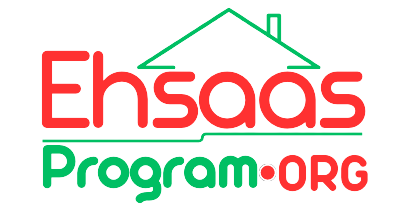Introduction:
Ehsaas is a groundbreaking social protection and poverty alleviation program initiated by the Government of Pakistan. Launched in 2019, Ehsaas aims to address the socio-economic challenges faced by the vulnerable segments of society, ensuring that no one is left behind. This comprehensive program encompasses a range of initiatives designed to provide financial assistance, healthcare, education, and livelihood opportunities to those in need.
Key Objectives:
The primary objectives of the Ehsaas Program include poverty reduction, social protection, and economic empowerment. The government envisions creating a welfare state where every citizen has access to basic necessities and opportunities for a dignified life. To achieve these objectives, the program focuses on various components, each tailored to meet specific needs.
Ehsaas Cash Transfer Program:
The flagship initiative of the Ehsaas Program is the Cash Transfer Program, which provides direct financial assistance to deserving families. Through a transparent and merit-based system, cash disbursements are made to those who meet the eligibility criteria. This initiative has proven instrumental in mitigating the immediate financial burdens faced by low-income households.
Kifalat Program:
Kifalat, a component of Ehsaas, targets the most vulnerable segment of society—women. Under this program, financial assistance is provided to deserving women to enhance their economic participation. The goal is to empower women by giving them the means to support their families and contribute to the economy.
Ehsaas Education Stipends:
Recognizing the importance of education in breaking the cycle of poverty, the Ehsaas Program includes a stipend initiative. This aims to support children from low-income families in pursuing their education by providing financial incentives. The program encourages enrollment and retention in schools, contributing to a more educated and skilled workforce.
Ehsaas Amdan Program:
Economic empowerment is further promoted through the Ehsaas Amdan Program, which focuses on providing vocational and skills training to individuals. By enhancing their skills and capabilities, beneficiaries are better equipped to secure sustainable livelihoods, fostering long-term economic independence.
Ehsaas Health Insurance:
Access to quality healthcare is a fundamental right, and the Ehsaas Program addresses this by providing health insurance to low-income families. This initiative ensures that individuals can receive medical treatment without the financial burden that often accompanies healthcare expenses.
Ehsaas Langar and Panagahs:
Recognizing the immediate needs of those facing extreme poverty, the program establishes Langar (soup kitchens) and Panagahs (shelters) to provide free meals and shelter to the homeless and vulnerable populations. These initiatives contribute to addressing the immediate needs of those in crisis.
Digital and Financial Inclusion:
Ehsaas leverages technology to ensure efficient service delivery. Through the digitization of financial transactions, beneficiaries receive funds directly in their accounts, reducing the risk of corruption and ensuring transparency in the distribution process.
Conclusion:
The Ehsaas Program in Pakistan stands as a testament to the government's commitment to social justice and poverty alleviation. By addressing the multifaceted challenges faced by the vulnerable populations, Ehsaas strives to build a more inclusive and equitable society. As the program continues to evolve, its impact on poverty reduction, healthcare access, education, and economic empowerment is expected to create a positive ripple effect, contributing to the overall development of the nation.

